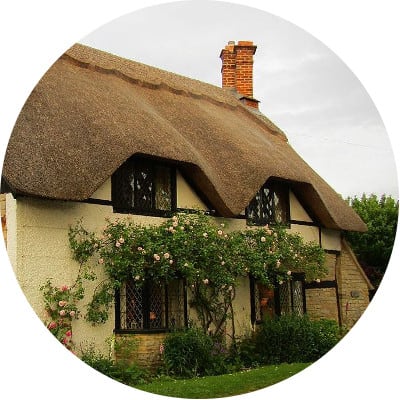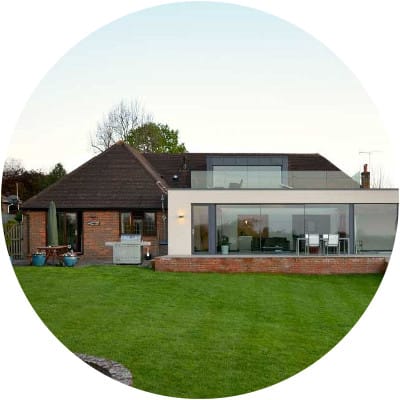Non Standard Home Insurance
Non Standard House Insurance
- Quotes from UK insurance providers
- One short form – save time & money
- 97% of reviewers recommend us
Policies and deals from industry leading insurance providers, including
Compare non-standard home insurance policies
Most UK home insurance policies are fairly standardised, because if the property isn’t too old, isn’t a listed building, has been built using standard construction methods and isn’t located in a flood zone or on ground that is at risk of subsidence then assessing the building’s risk profile is usually relatively straightforward for insurers, meaning the whole process can be standardised.

If your home is one of those that insurers class as non-standard, though, a regular, run-of-the-mill buildings insurance or contents insurance policy might not meet your needs – you might have to take out a non-standard home insurance policy instead, and that will often mean you’ll pay more for the coverage.
Not only that, but some insurers won’t agree to insure certain types of non-standard properties at any price because the insurance risk is simply too high.
That’s why it’s important to use an unbiased insurance comparison platform like Quotezone.co.uk if you’re taking out a home insurance policy for a non-standard home – because not only can it help you find a cheaper quote by comparing policies from a wider range of providers, but it can also ensure that you don’t waste lots of time dealing with insurance companies that aren’t willing to insure your home.
Compare Non-standard Home Insurance policies now
Home insurance for non-standard properties: a straightforward guide
What types of properties are classed as non-standard?
There are some insurance providers in the UK that will only insure standard homes, while others might agree to insure non-standard properties but hike their premiums to reflect the higher insurance risk these homes can sometimes represent.
But which properties do home insurance companies class as non-standard?
- Properties with thatched roofs: Thatched roofs may be quaint and charming, but they are also more expensive to repair than roofs of tile or slate, and they also represent a higher fire risk.
- Timber-frame houses: As with thatched properties, timber-frame houses are often seen as a much higher fire risk, which means they can be more costly to insure.
- Properties with flat roofs: A house with a flat roof is usually seen as a higher insurance risk because claims data suggests pitched roofs are less likely to suffer cracks, fractures and cave-ins than flat roofs.
- Flood-risk properties: Properties that have been built in flood zones represent a higher insurance risk, for obvious reasons. There are steps homeowners or landlords can take to reduce the risk of flood damage, such as installing anti-flood doors, but these properties are still classed as ‘non-standard’.
- Properties that have experienced subsidence: Landslips or other forms of subsidence can be incredibly damaging to a property’s structural fabric…and therefore hugely costly for the homeowner. In addition, if a house has experienced subsidence in the past there’s an increased risk something similar might occur in the future.
- Properties that have been underpinned: Underpinning your house is a major undertaking, and very costly. It usually suggests there is a significant issue with the property itself or the land it is built on, which means home insurance will cost more for underpinned homes.
- Unoccupied properties: Properties that are unoccupied have a higher risk of developing mould, rising damp or leaking pipes, and they are also more likely to be targeted by squatters and vandals.
- Listed buildings: Insuring a listed building is often more expensive than insuring a standard home, because listed properties usually have much more onerous requirements when it comes to repair work, and they are sometimes more prone to damage from inclement weather conditions too.
Is non-standard home insurance legally required?

If you own a non-standard house and the price your insurance provider is quoting for a non-standard home insurance policy is simply too high you might be wondering whether you can just forego the insurance altogether.
The answer, as with so many things, is “it depends”.
If you have a mortgage on the house then your lender will usually insist that you have buildings insurance at the very least, and you will usually have a contractual obligation to keep this insurance in place until the mortgage is paid off.
If you are mortgage-free, though, you should be free to decide yourself whether or not to insure your property. Just bear in mind that if you decide not to take out insurance it does mean you’ll have to cover the cost of repair work yourself if issues ever arise.
How can I find cheaper non-standard home insurance?
If you have a mortgage on your home you may have no choice but to take out a non-standard home insurance policy – but that doesn’t mean you can’t shop around to find a cheaper quote.
By using Quotezone.co.uk’s insurance comparison service you can get quotes from a wider range of insurance providers, making it more likely that you’ll find a suitable policy at a cheaper price.
What else can I do to reduce the cost of my non-standard home insurance policy?
The steps you’d take to reduce the cost of a regular, run-of-the-mill building and contents insurance policy will also stand you in good stead if you’re insuring a non-standard home. Things like:
- Ensuring the property isn’t left unoccupied for more than 30 days at a time
- Installing a burglar alarm, which can reduce the risk of break-ins
- Installing high quality locks on the property’s windows and doors, which can also help to reduce the risk of break-ins
- Installing smoke alarms, which can reduce the risk of fire damage
What people have to say about us
Very easy to find anything. Great and quick. No problems whatsoever. Would recommend to anyone who is looking for great deal on car insurance.
Karima
Atworth, United Kingdom
Very good service, affordable and good value
Jenny
Glasgow, United Kingdom
4.75/5 from 3781 customer reviews
